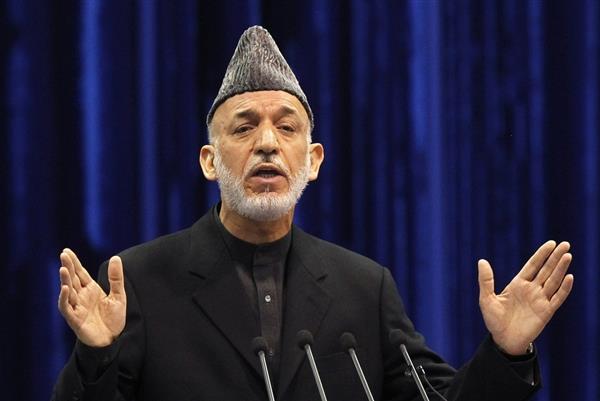January 29, 2014
MUMBAI: The executive suite is not the only place that is greying in India's 40-year-old information technology sector.

Indian IT sector worforce policy requires change
January 29, 2014
MUMBAI: The executive suite is not the only place that is greying in India's 40-year-old information technology sector.

Indian IT sector worforce policy requires change
As the $108-billion industry enters middle age and its growth slows, the three-million-strong workforce is also getting older, making it harder to extract some of the cost advantages of the young, cheap labour for which it is known.
Firms have had to change in order to attract and support employees with a more mature set of priorities, as the bright youngsters they recruited years earlier have become earnest family types.
"Middle-aged or married couples prefer to go back home on time, so don't like to stay back at work till late or do weekends," said Megha Jain, 34, a Bangalore-based employee of an Indian IT company. "There is more focus by the company to fine-tune policies around work from home and overtime."
Less partying, more parenting
The likes of Bangalore-based Infosys and Wipro were built on a young, cheap and educated workforce that also drew global giants such as IBM and Accenture to the country.
And the vibrancy of the new industry was epitomized by a corporate culture that was far more influenced by Silicon Valley than traditional Indian attitudes.
In India, many in their first jobs continue to live with parents, whereas working in IT often meant moving to another city, such as Bangalore, Hyderabad or Pune.
Organized weekend outings for staff were a common way of building bonds in the workplace for IT firms whose employees had mostly come straight from college.
Some firms also gave employees free movie tickets and let them expense meals with boyfriends or girlfriends.
Flush with money and new-found independence, these IT staffers were known both for working late and partying hard.
"There were not many mothers, or not many parents," Kingshuk Sanyal, a management consultant at Booz and Co, said of those early years in the industry.
Now, many Indian IT firms have tied up with childcare centers to help working couples manage. Some offer flexible working hours or extended time away from work, options that exist with few other Indian employers.
Market leader Tata Consultancy Services (TCS), which once had ad hoc policies around flexible hours and vacations, formalized them about four years ago as the ranks of older staff grew, said HR head Ajoyendra Mukherjee.
Middle-age spread
IT firms in India are placing increasing emphasis on training and developing existing staff, while slower growth means they no longer recruit college leavers at the same pace.
By March 2013, just over a quarter of nearly 157,000 employees at Infosys, the second largest industry player in India, were older than 30, compared with 15% of its 91,000 staff just four years earlier, according to an analysis by Barclays.
Barclays estimates that employees at TCS with more than three years of experience grew to 61% by the end of last March, from 50% five years earlier.
Infosys said it does not share the age breakdown of its employees, while TCS declined to comment.
Staffing at Indian IT companies has long been characterized by what human resources professionals call a "classic pyramid", with hordes of junior-level staff at the bottom and a steep narrowing as it goes higher.
"It's taking a different shape, where you have a flattened middle, because the number of people you would need at the level after the entry-level has gone up from where it used to be several years ago," said Srikantan Moorthy, head of human resources development at Infosys.
Price of experience
Firms that started small and grew fast when the industry first took off are now adjusting to a very different environment.
Industry revenue growth has slowed to the mid-teens from the 30% levels seen before the 2008 financial crisis hit the sector's two biggest markets in the United States and Europe.
Growth is unlikely to return to those heady levels any time soon as the industry matures.
Long an industry bellwether, Infosys hit a rough patch in 2012 when rivals such as TCS and HCL Technologies Ltd ate into its market share while it was in the midst of a strategy shift to diversify from commoditized services.
In an effort to turn itself around, Infosys last year brought back retired co-founder Narayana Murthy, now 67, to head the company as executive chairman. The company has a mandatory retirement age of 60 for executive directors.
The average employee age at Infosys was 28 by March 2013, two years higher than it was four years earlier, according to the company. The creep higher may seem incremental, but adds up to rising costs.
Barclays reckons that every half-year increase in average employee age leads to a decline of 1 percentage point in EBIT (earnings before interest and taxes) margins for services provided within India at Infosys.
Employee costs as a percentage of revenues increased by about 640 basis points over the 12 quarters through September, according to Barclays, as a result of poor demand forecasting and the rising age of employees.
At nearby rival Wipro, 34.5% of the workforce were aged between 30 and 50 at the end of last March, up from 32.3% two years earlier.
The ageing of the workforce is partly the result of the industry's push to offer higher-value services and break the linear correlation between headcount and revenue growth – an effort that so far has had mixed success.
"We have to add more value to clients, so that the costs you incur result in a difference that the clients can see," Infosys' Moorthy said.
Courtesy: Reuters
















































































































